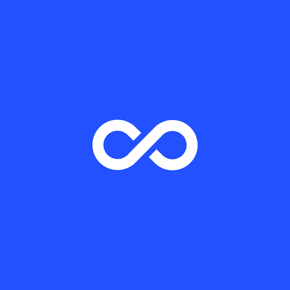Leaving a website, users often hastily close the pop-up window, frequently without even paying attention to its content. However, some do read its content and even click on a button that takes them to another area of the site or leave their data (e.g., email address) to receive more information on a topic of interest to them.
Such pop-up windows are known as exit pop-ups (also called overlay exit popups or exit intent pop-ups triggered by a specific action – in this case, the intention to close the page).. It's nothing more than a feature supported by marketing automation. It's used when a user intends to leave the site, to thereby keep them on it. It is an unobtrusive yet effective format for retaining the viewer's attention. Its additional goals include:
- most often increasing the number of transactions,
- subscription growth,
- strengthening the position as an expert in a given industry,
- building relationships and customer loyalty.
However, these are not the only possibilities for using exit pop-ups in e-commerce and beyond. The following post will answer the questions: what is an exit pop-up and what should you remember when implementing this type of functionality on a site, and how to use it not only for strictly transactional purposes.
What is a pop-up?
Before discussing the topic of exit pop-ups, it's worth briefly familiarizing oneself with the definition of a pop-up itself.
A pop-up is a window that appears while browsing a website. It has a specific message dependent on the goal previously set.
There are several types of pop-ups, including:
- age confirmation for sites containing content intended for adults,
- newsletter sign-up,
- informing about the use of cookies,
- engaging with a request for feedback,
- reminding about an ongoing promotion or special offer,
- activating during user inactivity (e.g., after 2 minutes),
- informing about an abandoned cart,
- upselling/cross-selling,
- encouraging to revisit a recently viewed product/category or article, or to download an e-book.
What is an exit pop-up and when does it appear?
An exit pop-up is a window with a message (often including graphics, text, a CTA button, sometimes also a space for a form). It activates in response to the user's intent, i.e., their mouse movement, the speed at which they scroll the page, or when they remain inactive for an extended period. However, it most often appears when the cursor moves towards the cross that closes the page, hence it's often called a "last chance" pop-up. That's when the exit pop-up is activated, a message created based on exit tracking software (determining the time a user leaves the site). Its goal is to capture the user's attention, redirect them to another page within the same site, or simply keep them by presenting an attractive offer when they intend to leave the site.
Such actions prove effective when users have contact with the site, systematically familiarize themselves with its content, but do not seek anything more within the site. They are not always aware that, in addition to an interesting blog or offer tab, the site also has a valuable product for sale or even an entire online store. This does not mean, however, that customers are not interested in purchasing – they simply lack knowledge about the existence of the e-store. Therefore, it's worth showing them other areas of activity, indicating the path they should follow, and achieving additional company goals, also with the help of exit pop-up.
An effective exit pop up, that is?
A well-designed pop-up will benefit both the site owner (by keeping the user longer) and the viewer (by giving them the opportunity to reacquaint or more thoroughly familiarize themselves with the offer). It can also encourage them to return to the site through additional benefits, such as an extra discount or freebie. This way, it's possible to gain not only conversion but also positively influence engagement and attachment to the brand.
When creating the perfect pop-up, remember to:
- include a link or reference to a specific landing page, a questionnaire for newsletter sign-up, an article with the latest post, or a selected offer,
- be specific. When informing about a discount, it's worth mentioning its value or the assortment covered by the discount, not just the information that a promotional campaign is underway,
- if the goal is to motivate the user to take specific steps, it's worth using so-called lead magnets, i.e., incentives that will prompt the recipient to leave their data – these can be discounts, free delivery, or a freebie. It's worth noting that such an action can increase the number of contacts by 85%,
- diversify the content of the pop-up on different pages within the same site – not everywhere will a window with information about a discount or a free e-book on industry trends work. Here, it's also worth considering the personalization of pop-ups based on data about recipients or based on their previous activities on the site,
- a thought-out strategy. It's not advisable to spam users with pop-up windows – it's recommended to use them sparingly and with appropriately chosen capping,
- conducting A/B tests and checking which form of communication is more effective. It's also possible to check which exit pop-up activating actions bring the best results, for example:
- those that display to users who have spent more than, say, 30 seconds on a given subpage,
- or those that display after 60 seconds spent on the site.
Furthermore, statistics show that conversion from pop-up messages averages 3%. The most effective are those that display to the user 8 seconds after entering the site. They increase effectiveness to 3.62%. The placement of the pop-up also matters – the highest conversion (3.35%) is achieved by those placed after scrolling 35% of the page.
What should a well-designed exit intent pop-up look like?
The effectiveness of an exit pop-up will depend on how it is designed. In the case of thoughtful actions, it can result in a significant increase in subscribers. However, this requires the implementation of certain steps and stages in deploying such messages. The first of these is to familiarize oneself thoroughly with the audience and their specifics, and then skillfully divide them into specific segments. This will provide knowledge about the differences between individual user groups, as well as the possibility to tailor messages to them.
Pop-up design
The key to success is a thoughtful design. To make the exit pop-up effective, it's worth utilizing all its possibilities, i.e., catchy copy, intriguing graphics, or a gif correlating with the content. There's the possibility to link content or redirect the recipient to a selected subpage within the site.
It's worth noting here that if there's a chance to add graphics to the exit pop-up, it should be done. It positively affects its effectiveness. In the case of pop-ups with graphics, their conversion is about 3.8%, while those without graphics implemented only 2.07%.
Pop-up Size
It's also necessary to consider the size of the overlay exit pop-up. There's the possibility of using the classic size, i.e., 600×700 px, which displays in the middle of the viewed site, and one that covers it entirely, example pop-up of appropriate size
CTA
The CTA is also extremely important. It might seem that a short call to action is not very significant, but nothing could be further from the truth. It's worth considering not only what content to choose (see, check, click or I'm checking, I'm downloading, I want to receive free xyz) but also what font, color, or special effects to use. The placement of the CTA should also be considered – it should be located where it will be visible and immediately attract attention,
Time Limitations / Countdown
Time pressure affects the speed of decision-making. When recipients know that the action lasts for a limited (short) time, they will be more willing to take advantage of it immediately and place an order. Therefore, it's worth using the FOMO (fear of missing out) effect by applying a countdown in the pop-up, example exit intent pop-up with a countdown
Responsywność pop-upów
The last but extremely important step is to ensure that the exit pop-up displays correctly not only on desktops but also on mobile devices. Information about the percentage of visitors using mobile can be checked, for example, in Google Analytics. However, nowadays, more and more sites generate significantly more traffic on mobile devices than on desktops. Therefore, the exit pop-up should be properly optimized for responsiveness. It's also worth checking if it displays correctly on different browsers.
Why implement an Exit Pop-up?
One of the main advantages of using an exit intent pop-up is that it appears when the user is heading towards leaving the site, encouraging them at the same time to take specific actions. Without it, the only solution would be to passively wait for the customer's return visit. Thanks to the possibility of customizing the appropriate content in the pop-up, it can not only generate conversion but also encourage leaving their data or signing up for the newsletter. This sign-up is usually possible on the site, but the form is most often located at the bottom of the site or in invisible places, so it is unconsciously ignored by users. Therefore, it's worth promoting it additionally, e.g., by placing the form in a pop-up window during an attempt to leave the site.
Another possibility is to use an exit pop-up that will help the user make a purchase decision. For this purpose, it's worth using communication:
- with bestsellers (the customer seeing that x people bought a given product will be more likely to consider it),
- with benefits (presenting the advantages of membership in the Club).
Conversion not only sales. Additional possibilities of exit overlay pop-up
Of course, the main goal of the exit pop-up is to increase conversion, and thereby achieve transactional goals. However, these are not the only possibilities arising from the use of such communication elements. They can also be applied to other tasks not directly related to the flow of money.
Additional benefits include:
- Expanding the user base
Acquiring valuable subscribers is not easy. Therefore, it's worth using additional possibilities – in this case, let them be exit pop-ups. They can serve to encourage customers to sign up for the newsletter or otherwise leave their contact details in the form. It's worth noting here that internet users are not so willing to leave their data on every site they browse. Therefore, it's worth encouraging them to take such a step, e.g., by offering something in return for contact details. Let it be a fragment of a recently created e-book, which is only available to a specific user base, additional advisory content, a guide, or other freebies that will attract users and interest them enough to want to stay in contact with the site for longer. - Creating an expert image
Pop-ups also provide the opportunity to develop an appropriate brand image. Not always the best solution will be to finalize the visit with a purchase. Sometimes a better move will be to tailor communication to the user and their current stage in the purchase path. Therefore, it's worth considering the next steps of the sales funnel and taking care of the appropriate redirection of the user to thematically related guides, listings, or articles that will prove valuable to them and at the same time facilitate decision-making and smooth passage through the decision process.
It's worth using questioning sentences in exit pop-ups, e.g., "Want to learn more about xyz? / See how... / Find out why...", and then leave space for an email or other user data. Such a move will make the brand associated as a valuable source of information on the topic of interest, and additionally allow building a lasting relationship with the new contact.
A good solution is to attempt non-sales communication. Offering a free e-book, guide, or temporary access to publicly unavailable webinars will be an additional incentive for contact, and at the same time give the opportunity to create the brand as an expert in the industry. - Effective redirection
Another goal of the tool, which is the exit pop-up, is the possibility of redirecting the recipient to another page within the site. It can be a seasonal landing page, the latest blog post, a guide on recently viewed products, or a limited offer. There are many possibilities, and everything depends on the goal set to be achieved.
To choose the right area for promotion, it's necessary to analyze the traffic on the site thoroughly. This will help draw conclusions about the most frequently visited areas and those that generate the least traffic. In the case where pages containing a lot of valuable information are rarely visited, this can be changed with the help of an exit pop-up redirecting to them. Let such a window be placed on more frequently visited subpages. Such a move will allow taking care of less visited areas and at the same time increase traffic on the entire site. - Informing about novelties
A new offer, service, functionality, and collection. This is a great opportunity to encourage a user browsing the site to familiarize themselves with what has just appeared on it and arouse their interest. Let an exit pop-up help inform users about it. Such a presentation of novelties can be done systematically. The condition is prior subscription to the newsletter. An additional advantage of such a solution will be generating sales leads. - Getting to know customers
In the case of wanting to apply personalized experiences, it's worth ensuring that different versions of exit pop-ups are displayed to individual user segments. For this purpose, retargeting is recommended. It's possible to specify pop-ups activated at the moment of wanting to leave the site in several versions:- let one of them be intended for new users,
- another for those who, within a certain time, familiarized themselves with the latest blog post,
- another for those who made a purchase or abandoned their cart.
Such a move will allow gaining valuable information about the recipients, and then optimizing marketing and sales activities towards them.
A good solution is to use an additional form in the exit pop-up, encouraging users to leave additional information about themselves. It's worth asking not only for a name or email address but also for the most interesting areas of the site, categories, brands, or sizes for the user. This, together with data collected through Google Analytics, will allow even more to tailor the offer, marketing strategy, and communication to the preferences of users and the area of their interests or searches. - Individual approach to the user
Personalizations, predictions, and other elements using AI allow even more to take care of an individual approach to customers. When there is a search engine on the site, it's possible to use data regarding the most frequently searched elements. This, in turn, will help capture the attention of users by displaying products, articles, or other information they are genuinely interested in the exit pop-up. - The possibility of scheduling a meeting
However, in the case where the site does not have an online store and does not use many e-commerce functions, it can also increase conversion with the help of an exit pop-up. Service industries can use the pop-up window to encourage the customer to schedule a meeting or take advantage of the first free consultation at the last moment when the customer is on the site.
There are plenty of ideas for using the pop-up window at the moment when the user wants to leave the site. Everything depends on the company's goal and ideas for increasing conversion.
Exit popup not only for sales
The pop-up window that appears when the user wants to leave the site is an effective and unobtrusive tool for attracting attention and maintaining their interest. The effectiveness of actions, however, depends on the behavior of recipients and previous knowledge about them while simultaneously relating to their own business goals. Therefore, it's necessary to analyze data, such as the bounce rate. This will allow finding out what causes users to leave the site and then improve that area to improve key KPIs. It's also important to tailor the content and appearance of the window to the needs of users. In this regard, the key will be to use the possibilities of personalizing the message, as well as offering an additional benefit in the form of a reward, incentive, or other freebie, to further increase the effectiveness of the exit pop-up.
In summary, the exit pop-up is an effective tool not only for e-commerce but also for other industries. By properly adjusting its view, content, graphics, forms, or size, and applying personalization, it will help positively affect effectively keeping the customer on the site, and at the same time also increase conversion, not only in terms of sales.






.jpg?width=300&name=Frame%204728%20(1).jpg)
